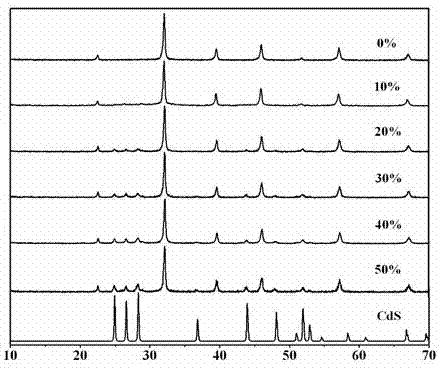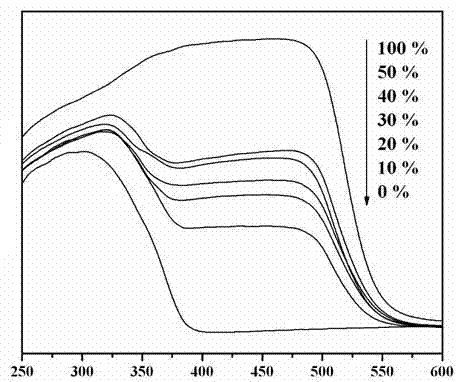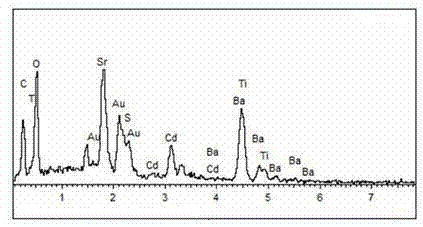Material CdS/Ba0.4Sr0.6TiO3 for producing hydrogen by photocatalytically decomposing water and preparation method thereof
A water splitting and photocatalytic technology, applied in chemical instruments and methods, chemical/physical processes, physical/chemical process catalysts, etc., can solve problems such as easy recombination of photogenerated electrons and holes, low utilization rate of visible light, harsh preparation conditions, etc. , to achieve the effect of easy reuse, low production cost and simple operation
- Summary
- Abstract
- Description
- Claims
- Application Information
AI Technical Summary
Problems solved by technology
Method used
Image
Examples
Embodiment Construction
[0014] Synthesis of catalyst material of the present invention:
[0015] Disperse 4 mmol (1.0454 g) of barium nitrate and 6 mmol (1.2698 g) of strontium nitrate in 25 ml of 2 mol / L sodium hydroxide solution, and stir for 30 minutes to obtain A solution. Then 10 mmol (3.4 mL) of tetra-n-butyl titanate was dissolved in 5 mL of absolute ethanol, and stirred evenly to obtain B solution. Solution B was poured into solution A stirred in an ice-water bath, and solution C was obtained after stirring for 30 minutes. Dissolve 4 mmol (1.0661 g) of cadmium acetate in 5 mL of deionized water, slowly add it dropwise to solution C, and obtain solution D after ultrasonic dispersion for 15 minutes. Dissolve 4 mmol (0.9607 g) of sodium sulfide in 5 ml of deionized water, slowly add it dropwise to solution D, and ultrasonically disperse for 15 minutes. The above solution was put into a 100 ml polytetrafluoroethylene reaction kettle, and put into a muffle furnace at 200° C. for hydrothermal rea...
PUM
 Login to View More
Login to View More Abstract
Description
Claims
Application Information
 Login to View More
Login to View More - R&D
- Intellectual Property
- Life Sciences
- Materials
- Tech Scout
- Unparalleled Data Quality
- Higher Quality Content
- 60% Fewer Hallucinations
Browse by: Latest US Patents, China's latest patents, Technical Efficacy Thesaurus, Application Domain, Technology Topic, Popular Technical Reports.
© 2025 PatSnap. All rights reserved.Legal|Privacy policy|Modern Slavery Act Transparency Statement|Sitemap|About US| Contact US: help@patsnap.com



